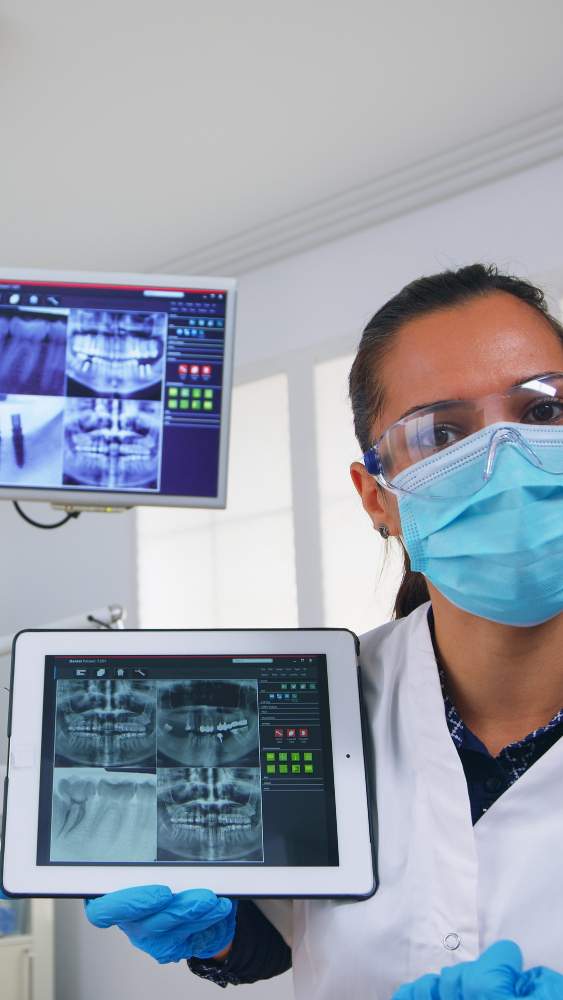
A beginner-friendly guide to CDT codes and how to use them for accurate dental billing.
Starting a dental practice brings excitement about helping patients achieve better oral health, but it also introduces complex administrative challenges that dental school didn't fully prepare you for. One of the most critical aspects of running a successful practice is understanding CDT codes and how they impact your revenue cycle.
CDT codes might seem like just another administrative hurdle, but they're actually the foundation of your practice's financial health. Getting them right means faster payments and fewer headaches. Getting them wrong can lead to denied claims, frustrated patients, and cash flow problems that can seriously impact a new practice.
This guide will walk you through everything you need to know about CDT codes, from basic concepts to advanced strategies that will help your startup practice thrive financially.
What CDT codes represent?
Current Dental Terminology codes serve as the universal language between dental practices and insurance companies. Think of them as a standardized vocabulary that ensures everyone involved in the billing process understands exactly what treatment was provided.
Each CDT code consists of five characters: the letter "D" followed by four numbers. This simple format contains a wealth of information about the type of service provided, and understanding the organizational structure helps you navigate the system more effectively.
The American Dental Association maintains these codes and updates them annually to reflect advances in dental technology and changes in treatment approaches. This means your team needs to stay current with code changes to maintain billing accuracy.
How CDT codes are organized:
The numbering system follows logical categories that correspond to different areas of dental practice:
- D0000 series: Diagnostic procedures including examinations and imaging
- D1000 series: Preventive treatments like cleanings and fluoride applications
- D2000 series: Restorative work including fillings and crowns
- D3000 series: Endodontic procedures such as root canal therapy
- D4000 series: Periodontal treatments for gum disease
- D5000 series: Removable prosthetic appliances
- D6000 series: Implant services and fixed prosthodontics
- D7000 series: Oral and maxillofacial surgical procedures
- D8000 series: Orthodontic treatment
- D9000 series: Adjunctive services and specialized procedures
This logical organization helps you quickly identify the appropriate code category for any procedure you perform.
Key components that make CDT codes work
Every CDT code includes specific elements that provide detailed information about the procedure:
The code number itself identifies the specific procedure performed. For example, D1110 represents a prophylaxis cleaning for an adult patient.
Nomenclature provides the official name or title of the procedure. This standardized naming ensures consistency across all dental practices.
Descriptors offer additional details about when and how the code should be used. These clarifications help prevent coding errors and ensure appropriate usage.
Understanding these components helps you select the most accurate codes for your procedures and avoid common mistakes that lead to claim denials.
Critical mistakes that affects Dental Coding
New dental practices often struggle with coding accuracy, leading to financial problems that could be easily avoided. Here are the most costly errors to watch out for:
Incorrect code selection happens when procedures are coded inaccurately, either too high or too low on the complexity scale. This can result from misunderstanding procedure requirements or trying to maximize reimbursement inappropriately.
Timing errors occur when codes are used outside their intended frequency limitations. Insurance plans have specific rules about how often certain procedures can be performed, and violating these rules leads to automatic denials.
Documentation gaps create problems when the clinical records don't support the codes submitted. Insurance companies may request additional information, and inadequate documentation can result in claim rejections.
Bundling violations happen when practices bill separately for procedures that should be included together. Understanding which procedures are considered inclusive of others is essential for accurate billing.
Professional dental billing services help practices avoid these errors through systematic processes and ongoing education about proper coding practices.
Insurance processing and your code choices
Insurance companies use sophisticated systems to evaluate claims, and understanding how these systems work helps you submit cleaner claims that process more quickly.
Automated reviews handle straightforward claims for common procedures. When your codes align with standard treatment patterns and the claim includes all required information, payments can be processed within days.
Manual reviews are triggered by unusual code combinations, high-dollar amounts, or procedures that fall outside typical treatment patterns. These reviews take longer but can still result in approval when properly documented.
Prior authorization systems require pre-approval for certain procedures before treatment begins. Prior authorization services can help manage these requirements efficiently, ensuring approvals are in place before you provide treatment.
Frequency monitoring automatically checks whether procedures comply with plan limitations. Understanding these restrictions helps you schedule treatments appropriately and set accurate patient expectations.
Technology solutions for coding excellence
Modern dental practices need technological support to maintain coding accuracy while managing administrative efficiency. Several types of solutions can significantly improve your coding processes:
Practice management integration allows your clinical documentation to flow seamlessly into billing processes. When treatment notes are properly recorded, the system can suggest appropriate codes and flag potential issues.
Electronic health records create comprehensive documentation that supports your coding choices. EMR/EHR services ensure that clinical information is properly captured and easily accessible for billing purposes.
Eligibility verification tools provide real-time information about patient coverage, including which procedures are covered and what authorization requirements apply.
Claim review systems analyze submissions before they're sent to insurance companies, identifying potential problems that could result in denials.
Handling rejections and maximizing recoveries
Even with excellent coding practices, some claims will be denied. Your response to these denials significantly impacts your overall collection rate and practice profitability.
Denial analysis helps you understand why claims are rejected. Common reasons include coding errors, missing information, coverage limitations, and authorization issues.
Systematic appeals follow structured processes to overturn inappropriate denials. This includes gathering supporting documentation, preparing written appeals, and tracking deadlines.
Documentation strategies ensure you have the clinical evidence needed to support your coding choices. Comprehensive records include detailed treatment notes, relevant imaging, and clear justification for treatment decisions.
When insurance recoveries are maximized but patient balances remain, collection services can help recover outstanding amounts while maintaining positive patient relationships.
Keeping pace with annual changes
The dental industry evolves rapidly, and CDT codes change annually to reflect new procedures, technologies, and treatment approaches. Staying current with these changes is essential for billing accuracy.
Update implementation requires systematic approaches to ensure your entire team understands new requirements. This includes updating reference materials, training staff, and modifying software settings.
Transition planning helps you manage the changeover from old codes to new ones, especially for treatment plans that span the year-end boundary.
Insurance communication ensures that carriers are implementing new codes correctly and that your claims will be processed appropriately.
Credentialing services help maintain current information with insurance carriers, which is important for proper processing of updated codes.
Building reliable systems for long-term success
Successful dental practices develop comprehensive systems that ensure coding accuracy regardless of staff changes or patient volume fluctuations.
Quality control processes include regular audits of coding practices, identification of error patterns, and implementation of corrective measures.
Training programs ensure all team members understand proper coding practices and stay current with changes. This includes initial training for new employees and ongoing education for existing staff.
Performance monitoring tracks key metrics like denial rates, collection percentages, and processing times to identify areas for improvement.
Standard procedures document proper coding practices so that all team members follow consistent approaches.
Financial impact of coding precision
Accurate CDT coding directly affects multiple aspects of your practice's financial performance:
Revenue optimization ensures you receive appropriate payment for services provided. This includes using the most specific codes available and avoiding undercoding that reduces reimbursement.
Cash flow management improves when claims are processed quickly and accurately. Clean claims typically result in faster payments and more predictable revenue.
Administrative efficiency increases when initial coding is accurate, reducing time spent on claim corrections, appeals, and patient communications about billing issues.
Compliance protection reduces audit risks and ensures your practice maintains good standing with insurance carriers. Medicare audit protection becomes particularly important for practices serving senior patients.
Patient relationships and billing transparency
While patients don't need to understand technical coding details, clear communication about billing practices builds trust and reduces confusion.
Treatment discussions should include information about procedure codes when relevant, helping patients understand what services are being provided and how they'll be billed.
Insurance verification conversations should address coverage details, including any limitations or requirements that affect the patient's out-of-pocket costs.
Financial arrangements should be established clearly before treatment begins, with written agreements that specify patient responsibilities.
Emerging trends and future considerations
The dental industry continues to evolve, bringing new challenges and opportunities for coding and billing:
Teledentistry expansion is creating needs for new codes that accurately represent virtual consultation services and remote monitoring.
Technology integration continues to advance, with artificial intelligence beginning to assist with code selection and claim review processes.
Payment model evolution may bring changes to how procedures are bundled and reimbursed, potentially affecting traditional fee-for-service coding approaches.
Strategic partnerships for coding success
Many dental startups find that partnering with experienced billing professionals provides the expertise needed to manage CDT coding effectively while allowing the clinical team to focus on patient care.
Professional expertise includes deep knowledge of coding requirements, insurance policies, and appeal processes that takes years to develop internally.
Ongoing education ensures your billing practices stay current with industry changes and best practices.
Technology access often includes advanced software solutions that might be cost-prohibitive for individual practices to implement.
Performance improvement comes from systematic approaches to identifying and correcting billing inefficiencies.
Working with experienced dental billing services can provide the foundation for long-term financial success while allowing your team to concentrate on delivering excellent patient care.
Your path to CDT coding mastery
Understanding CDT codes is essential for dental startup success, but it doesn't have to be overwhelming. By focusing on systematic approaches, investing in proper training, and leveraging available resources, you can build a billing foundation that supports your practice's growth.
The key is to view CDT coding not as an administrative burden, but as a critical component of your practice's success strategy. Accurate coding leads to faster payments, fewer denials, and better patient relationships—all of which contribute to a thriving practice.
Whether you choose to develop coding expertise internally or partner with professional billing services, the investment in proper CDT code management will pay dividends throughout your practice's growth. Your patients deserve excellent clinical care, and your practice deserves accurate compensation for the services you provide.
Remember that coding accuracy is a skill that develops over time. Start with solid fundamentals, stay committed to ongoing education, and don't hesitate to seek professional help when needed.
With the right Medical Billing Services like Delonhealth, CDT codes become a powerful tool for practice success rather than a source of frustration.









